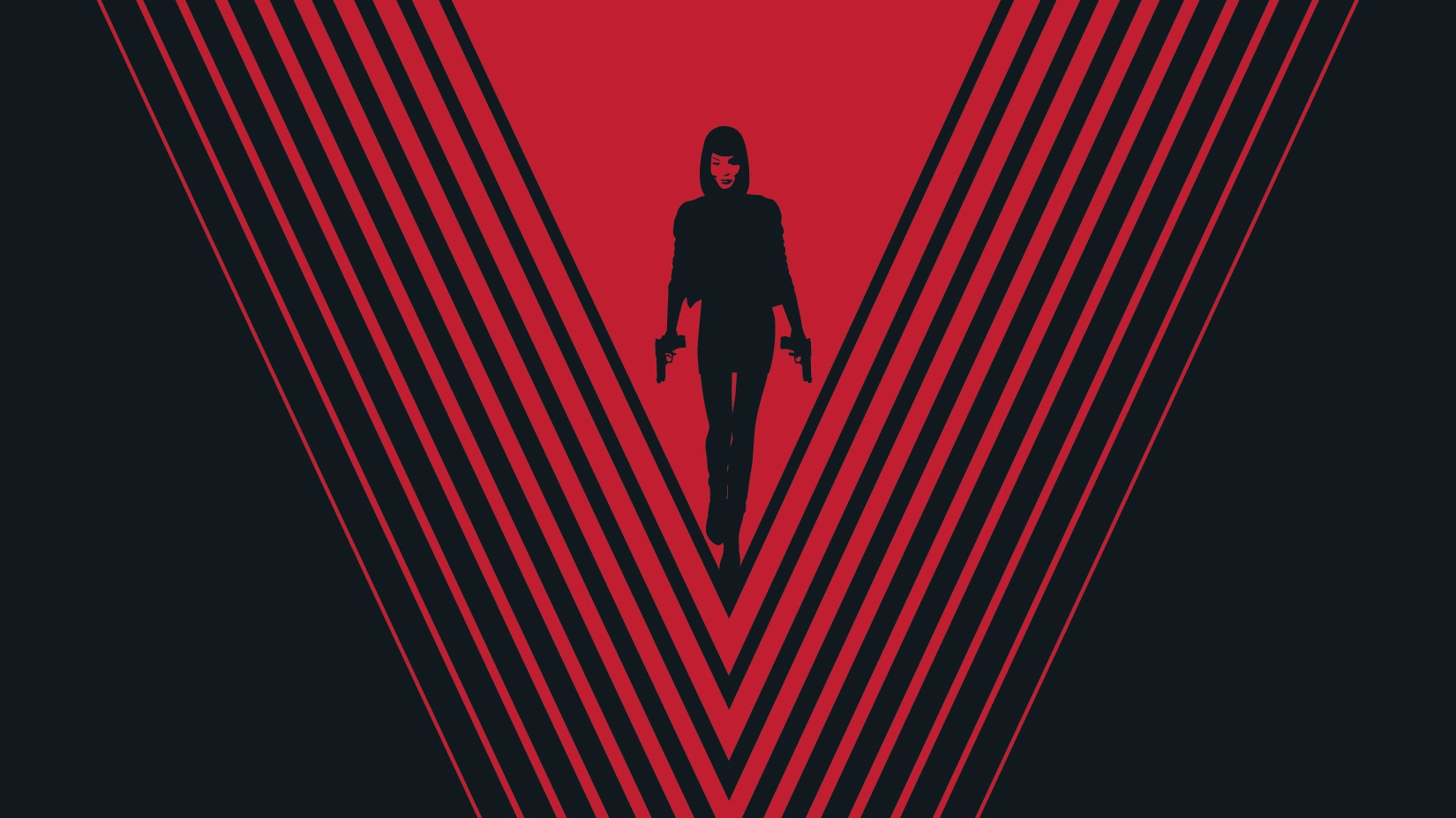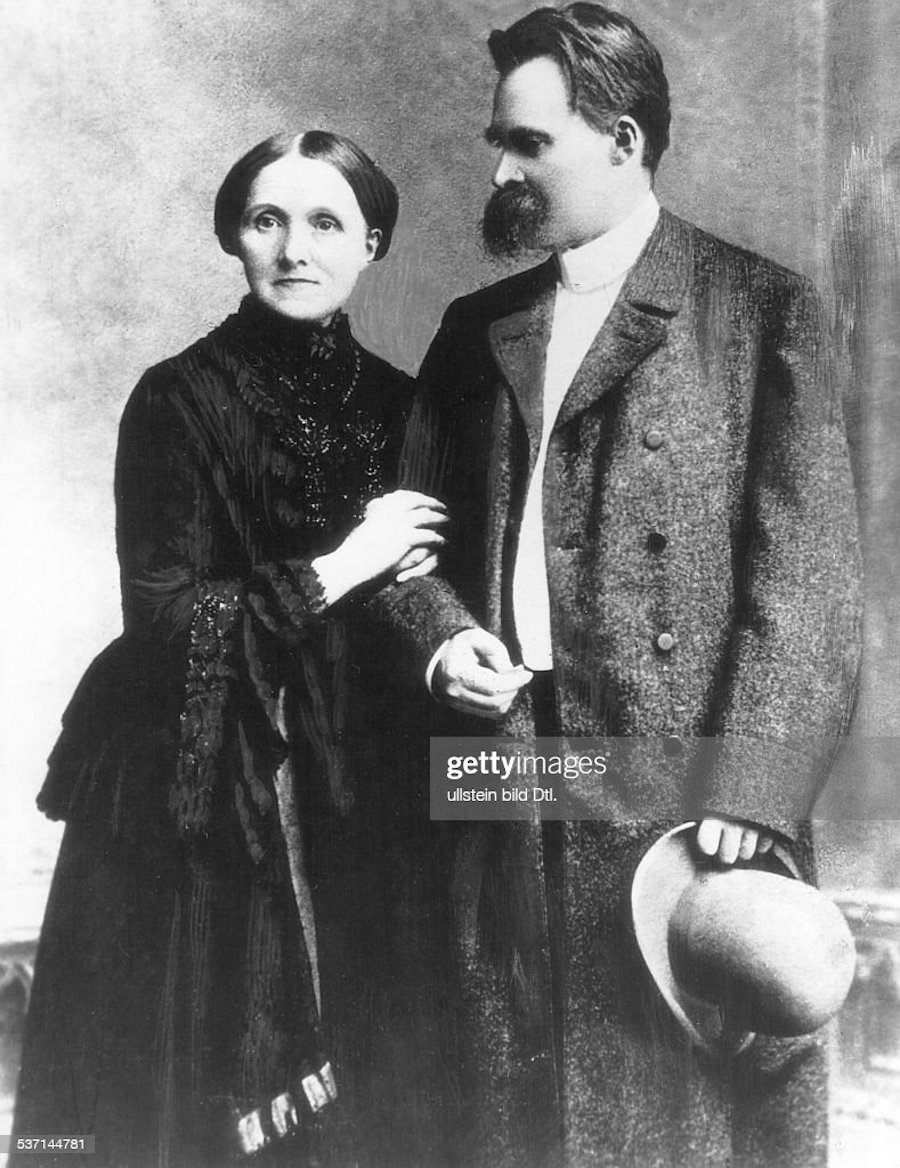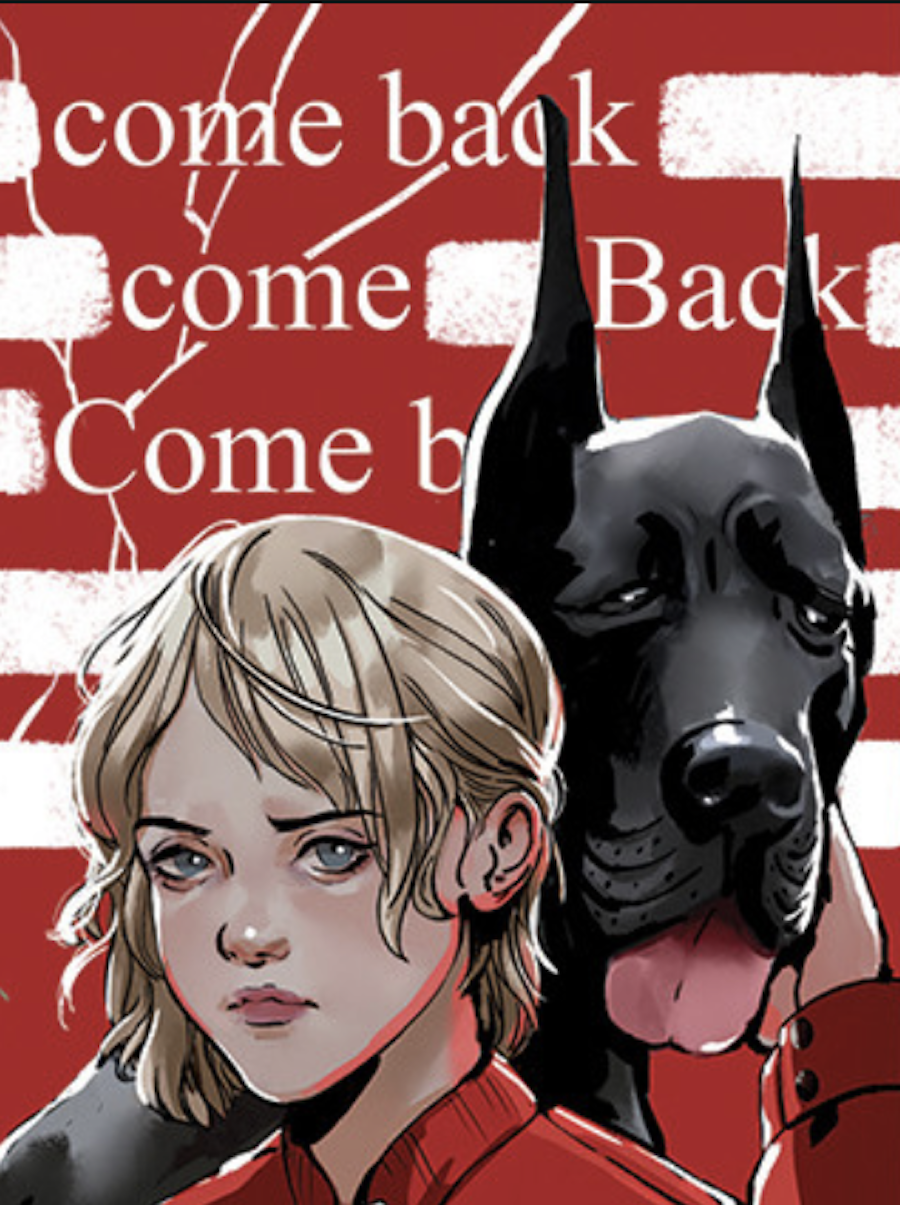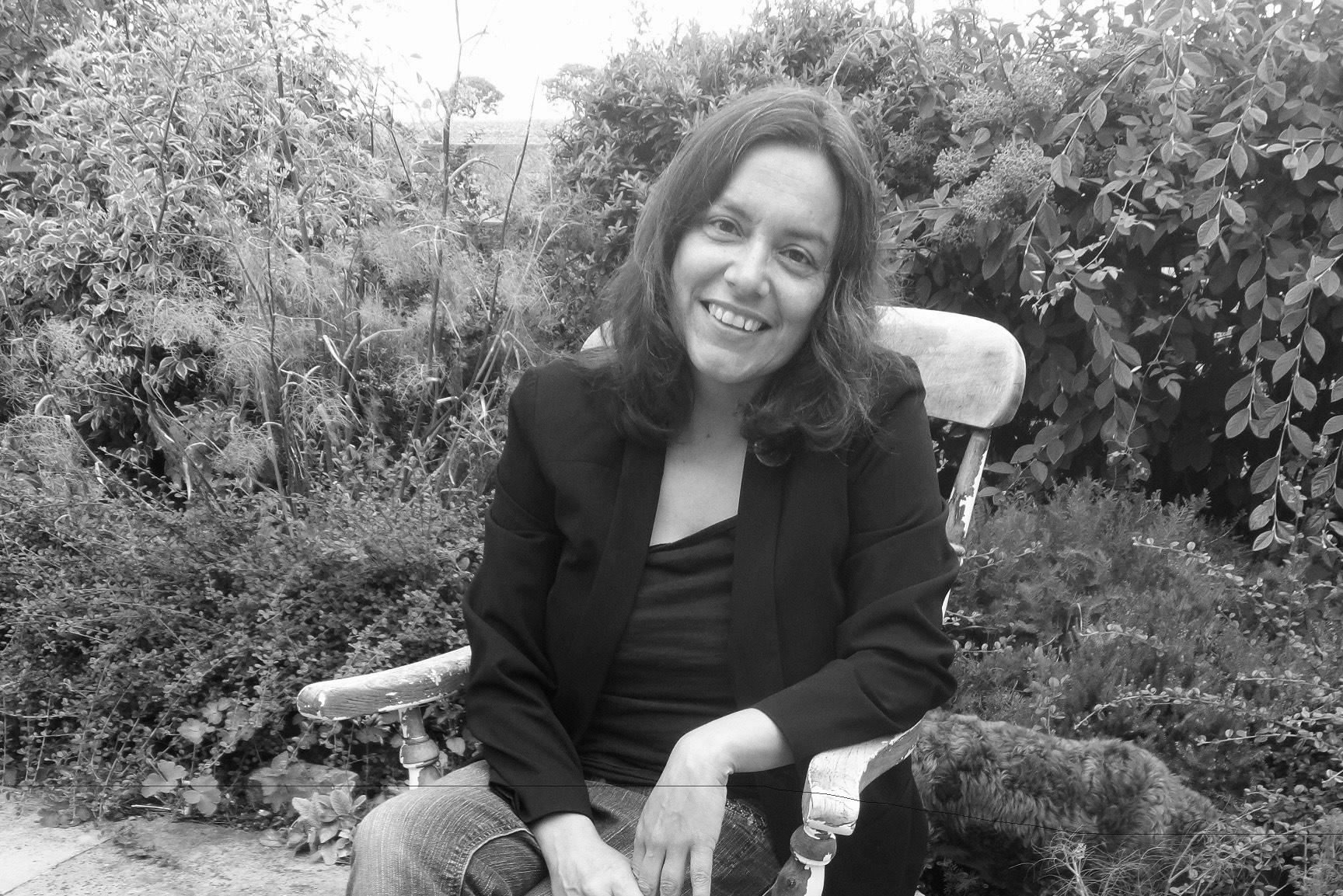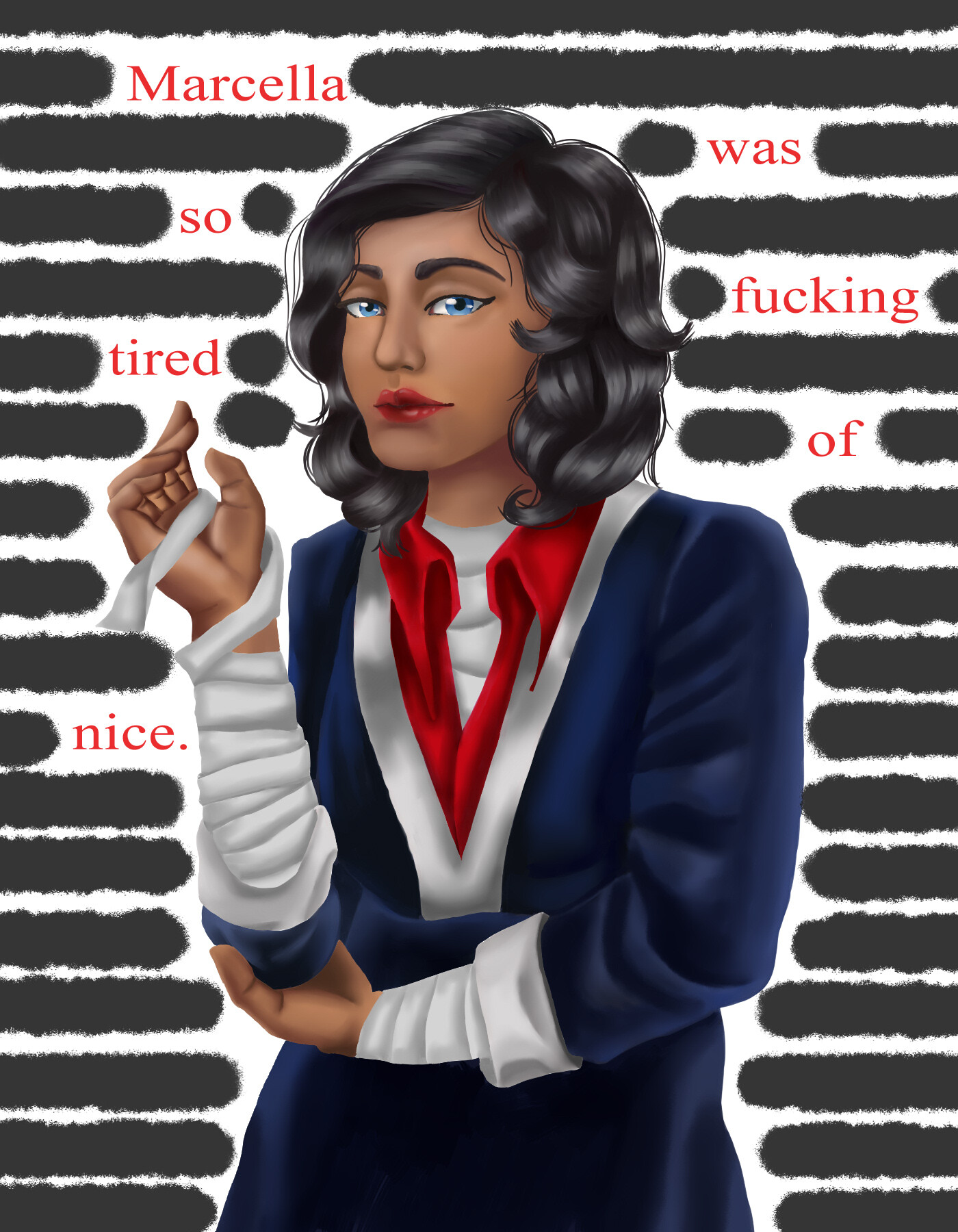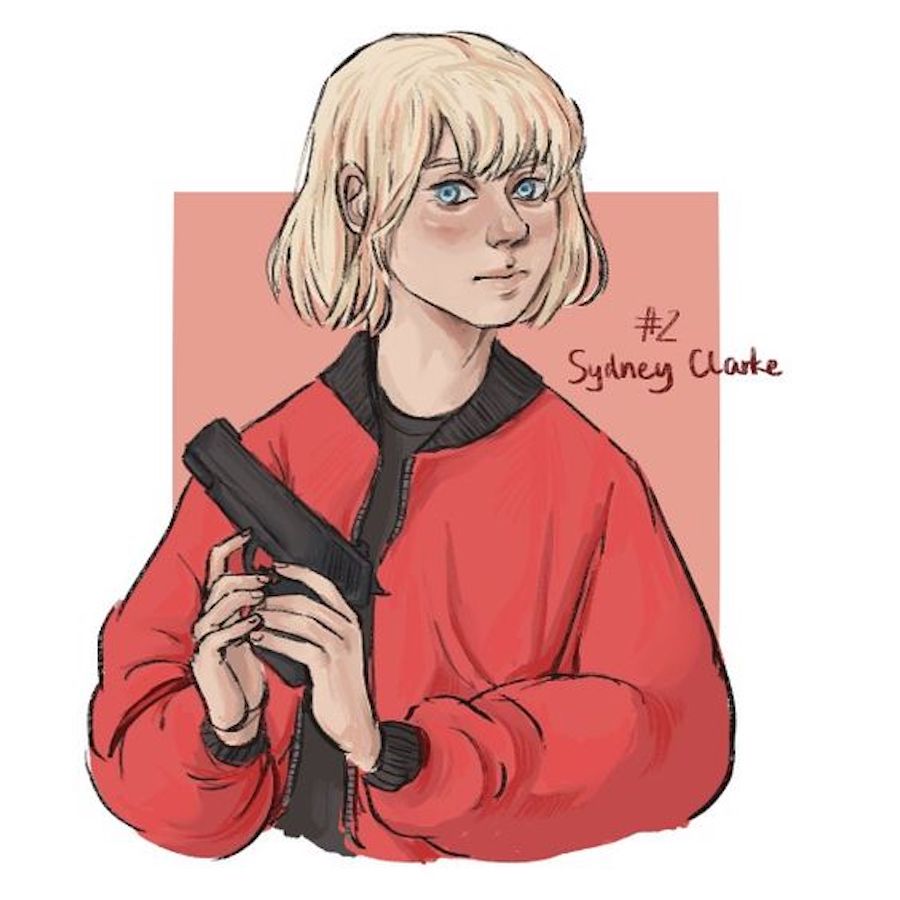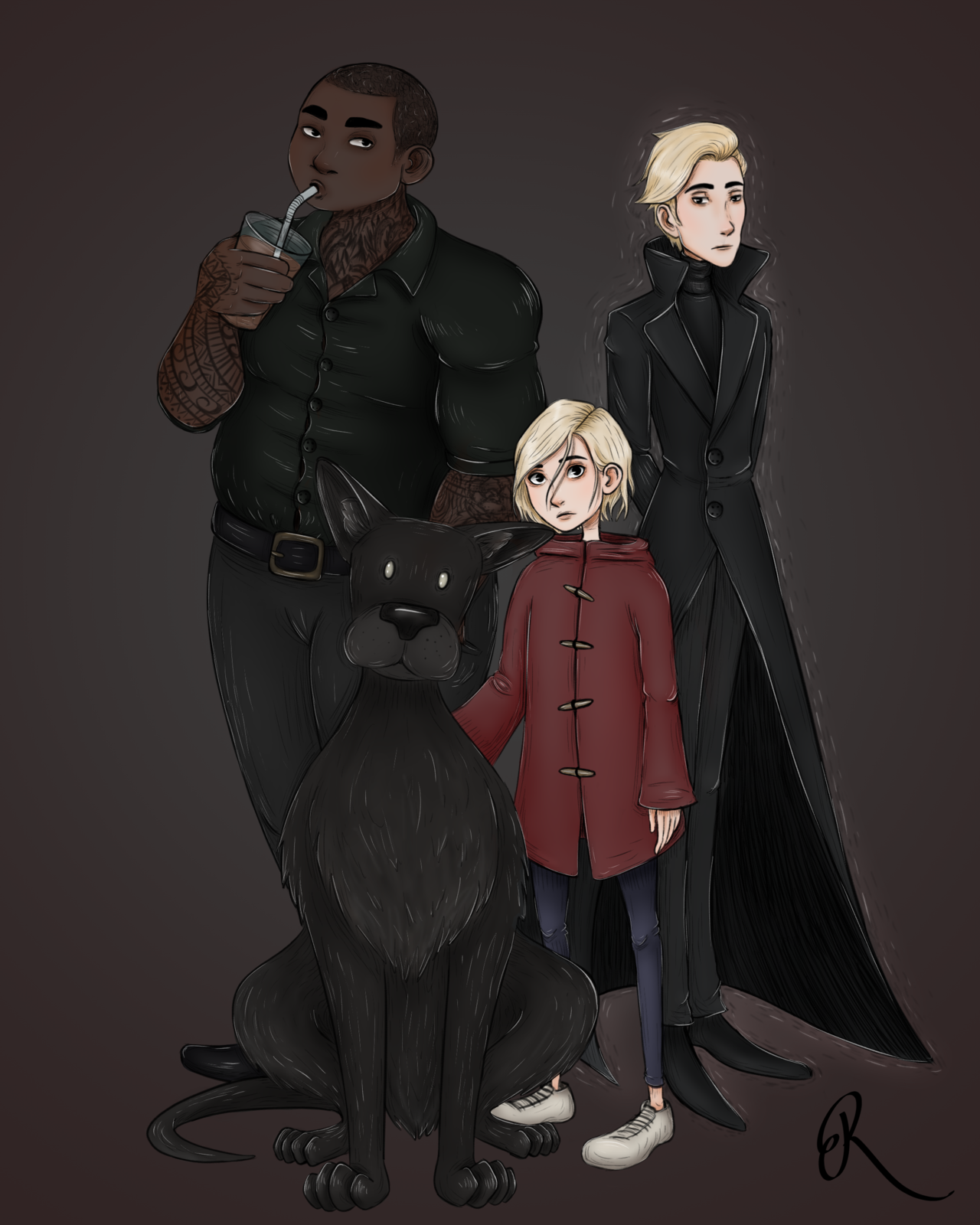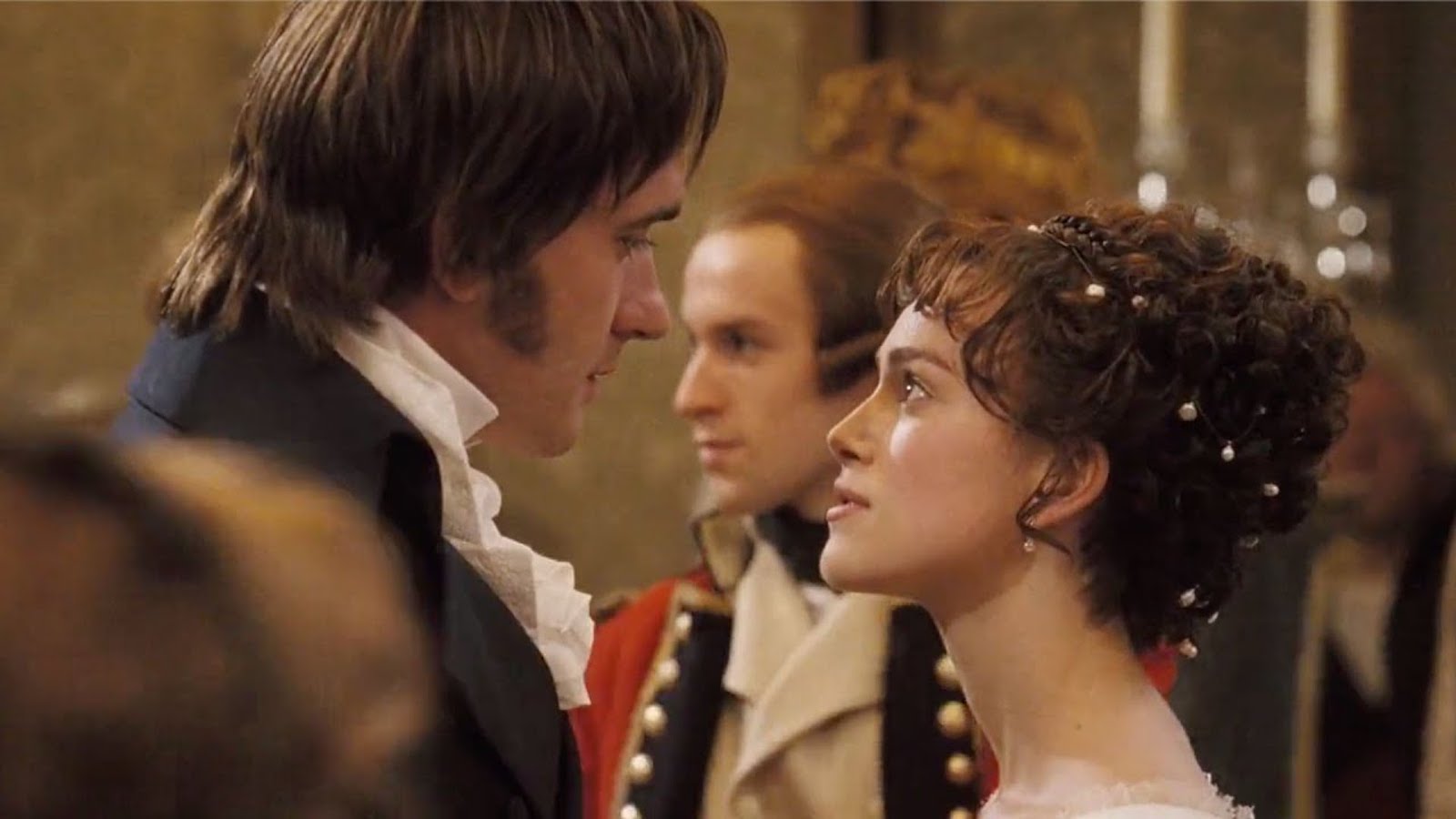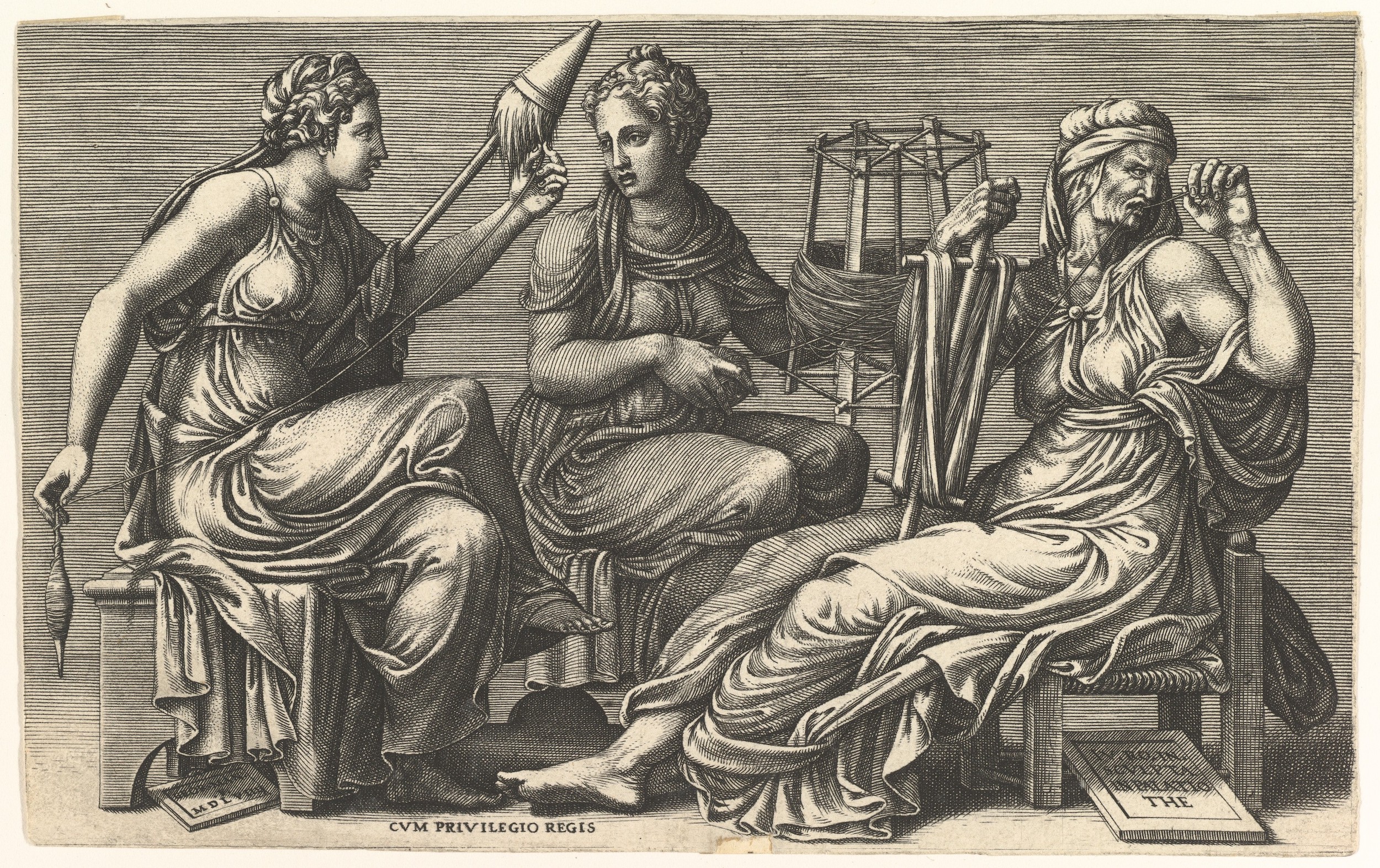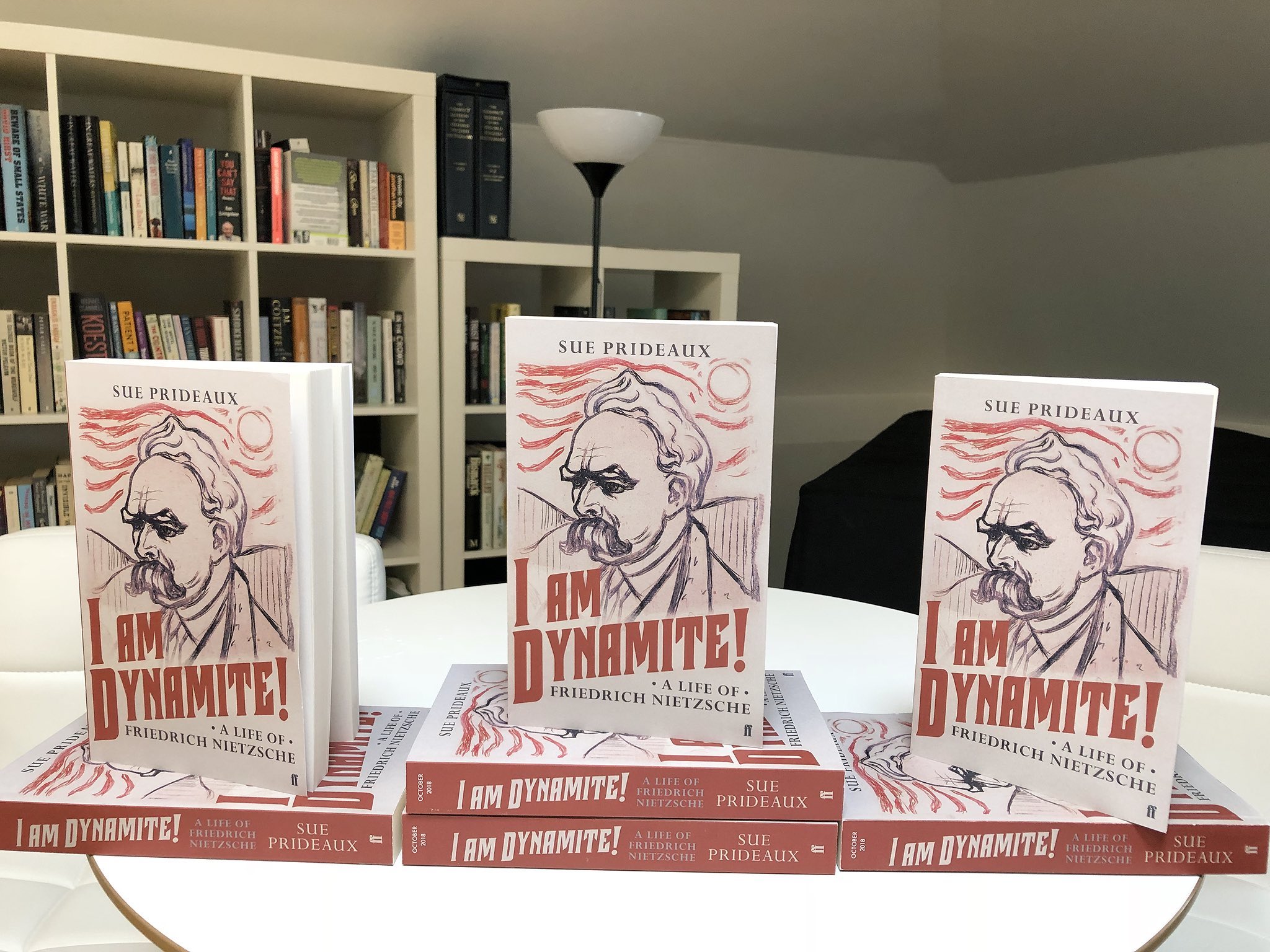Table of Contents Show
Batman, Superman, Spider-Man — Superheroes cling to our imagination and captivate our society. It is not just their powers and costumes that people are obsessed with, but the age-old fight between good and evil. Without a villain to defeat, a hero would have no drive, no purpose, no point.
Academics debate over what it means to be good or to be evil, but the German philosopher Friedrich Nietzsche has his own concept of the two terms and their histories. The ideas of “good” and “evil” are complex to Nietzsche, much of his reasoning coming from what he calls “master-slave morality.” In this reasoning, the masters (speaking in terms of hierarchical society) deemed themselves and their actions “good,” and therefore the opposite of that — poor, weak, common people — became “bad.” Nietzsche’s commentary on this leaves much to be desired from a feminist perspective, because, while it is not explicitly described as such, according to master-slave morality theory, man is the master and woman is the slave (( Nietzsche, Friedrich. “The Genealogy of Morals.” 1913. )).
Man, the gender that has historically been deemed itself to be superior, are masters because they define themselves as good, making the opposite of man — woman — evil; bolstering that logic is the trend of women being resentful (a key quality of the slave) of men (some examples being suffrage, the “glass ceiling”, etc.). However, there is a much more nuanced approach that can be taken when it comes to femininity and morality.
“How many men would she have to turn to dust before one took her seriously?”
V. E. Schwab (( Goodreads.com. “A Quote from Vengeful,” 2018. ))
The concept of a resentful woman in a work of literature can be analyzed through a feminist reading to critique Nietzsche’s concept of master-slave morality. By using three female characters from V. E. Schwab’s science-fiction novel Vengeful (( Schwab, V. E. “Vengeful.” 2018 )), one can analyze each character at three different levels — as an individual, as a human woman, and as an ExtraOridinary (Schwab’s term for a human with supernatural abilities) — to determine if modern feminist theory can expand on Nietzsche’s master-slave philosophy, stimulating a more nuanced reading of women in 21st century, fantasy literature.
Schwab’s Creation Of The Vengeful Woman
Vengeful is the second book in V. E. Schwab’s series set in a world where superheroes are real, but nothing like the ones we see in movies. It took Schwab five years to write, a journey that she documented on social media, unafraid to discuss openly how difficult it was for her to write such a complex novel that follows multiple characters across varying timelines.
Throughout the two novels, humans that have had painful, traumatizing, near-death experiences find themselves living with some type of extraordinary power; this power is always very closely related to their last thoughts in the moments before they die and are — by whatever means — revived. While the first book, Vicious, sets up a story between two brother-like best friends turned enemies, Vengeful sheds light on the power of the feminine. Schwab follows three women, all of whom are ExtraOridinary, but, despite their newfound power, find themselves still playing by the rules of men.
Marcella Riggins is a former mob wife, hungry for social power and sickened by the men who treat her like a play-thing. She dies in a house fire started purposefully by her husband, and her last thought before death is that she will “ruin him.” This causes her to survive and develop the power to erode anything and anyone she touches.
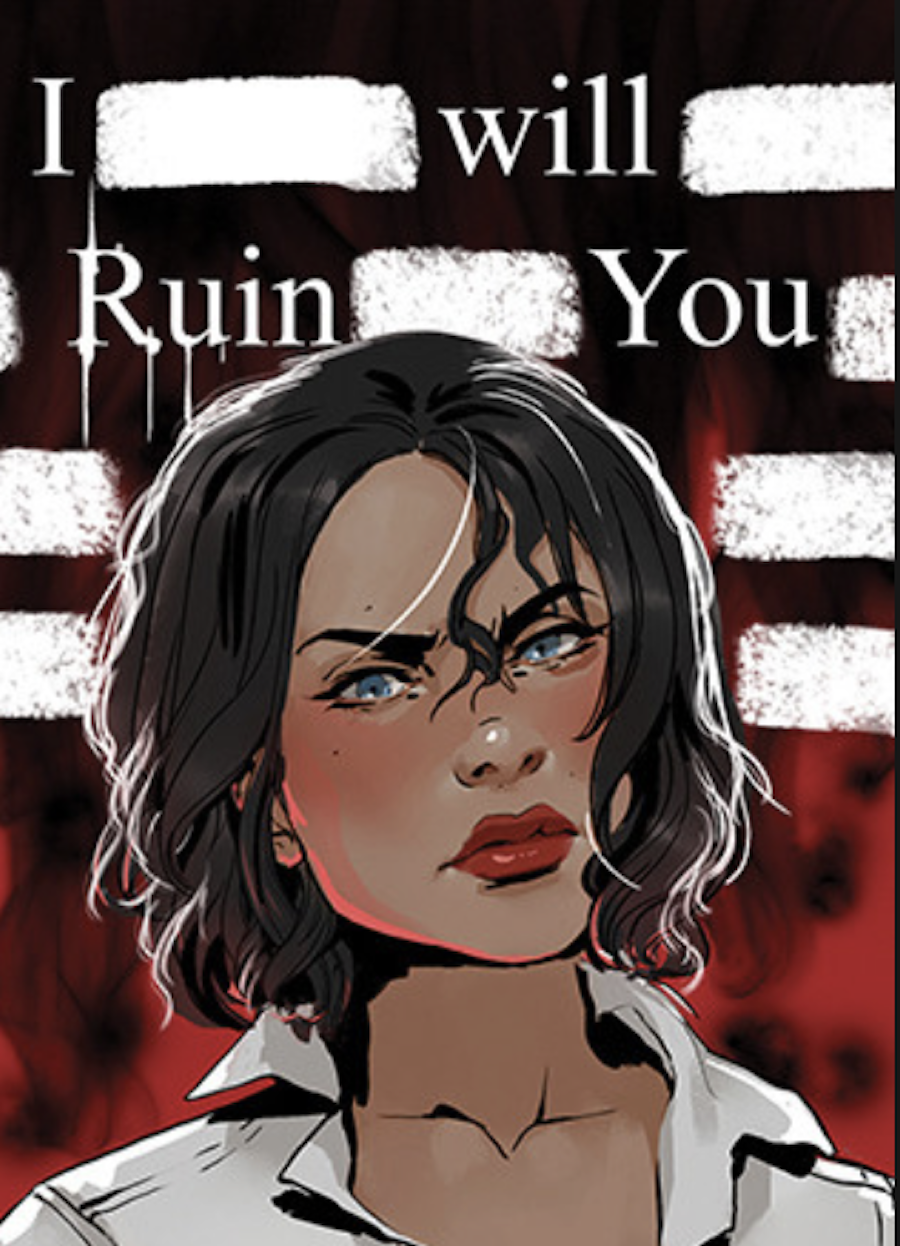
The second character, June, has a less detailed back-story, with a minor sub-plot within the book revealing that she was most probably the subject of a sexually violent death. Her last thought before death bestowed her with the power to shape-shift into the body of anyone she has ever touched and assume their memories upon her survival. While she is using her power, she cannot be killed; any harm that comes to the body she is wearing stays with that person and not her.
The third character, Sydney Clarke, was killed alongside her sister when the two fell into a frozen lake. Her last thought involved seeing her sister float away and wishing she would “come back.” Upon survival, her power became resurrection. With a touch, Sydney can resurrect humans, animals, and ExtraOridinaries with seemingly no limit on how many times it is possible to do so; however, her resurrection of ExtraOridinaries can affect their powers.
Each character’s back-story is crucial to their deaths and survival, and therefore how they interact with the world after the traumatic event. While Sydney’s past doesn’t seem to involve any prominent male figures, both Marcella and June are heavily influenced by the men they were involved with before their deaths. All three women are defined in the novel by their interaction with the male characters around them, which Schwab does purposefully to showcase each woman’s character arc.
Nietzsche’s theory of master-slave morality and his concepts of “good” versus “evil” are perfect for discussing the trope of the superhero but lack a feminist approach which is crucial for a text depicting the feminine with power. The feminist theory work by writer and independent scholar Sara Ahmed in her book, The Cultural Politics of Emotion proves an excellent source to explore these three characters in regards to feminine power and emotion, and to offer a critique of Nietzsche’s theories as applied to literary text containing a strong female focus.
To do a feminist reading of each character through Ahmed’s work, the three women must be examined as individuals, as human women, and as ExtraOridinaries. Through this tertiary gaze, there is a strong correlation between the emotions — and the emotion’s association to either masculinity or femininity — expressed by each woman, and the reception of their ExtraOridinary power by the male-dominated society they are a part of. In The Cultural Politics of Emotion, Sara Ahmed explores pain, hate, fear, disgust, shame, and love. She comments particularly on how emotions are imperative to feminism but do not themselves make up the whole of the feminist philosophy. The emotions felt by the three women within Vengeful are important to understanding who they are as women, as well as how they are perceived by the world around them (( Ahmed, Sara. “The Cultural Politics of Emotion.” 2014. )).
Marcella Riggins
“All Marcella’s life, men had looked at her with lust, desire. But this was different. This was fear. And it felt good.”
V. E. Schwab
Marcella Riggins is perceived — both in the present and in recollections of her past — as a sexually driven individual, but that sexuality is purposefully yoked to her intelligence. When she and her husband first meet, readers see the first inklings of Marcella’s desire to be seen as an equal.
“‘What do you want to be?’
Marcella twirled her beer. “In charge.”
Marcus laughed. A soft, breathy sound.
‘You think I’m joking’ (Schwab)?”
Later in Marcella’s life, Schwab points out that desire has come to a much more dangerous head. Married to a mob boss, Marcella’s thirst for power has turned into a need to control all things, including the lives and deaths of others. Her excursions to the shooting range are sexually charged, but that lust is overpowered by a deep yearning to learn.
“She could feel his excitement pressing against her, but the gun range wasn’t just a kinky setting for a birthday fuck. There would be time for that, later, but first, she wanted to learn (Schwab).“
Aside from lust, Marcella experiences emotions strongly and Schwab’s plot focuses heavily on Marcella’s negative experiences. This serves as a device to set up a sort of villain origin story. Though she does not lack the ability to love, her desire for control is always placed above emotion.
“Her mother liked to say she’d gone fishing and somehow bagged a great white. But what her mother didn’t understand was that Marcella had baited her hook with her prize in mind. And she’d caught exactly what she’d wanted.”
V. E. Schwab
On the whole, Marcella’s emotions are often fueled by hate throughout the majority of the text- her husband’s death and her subsequent focus on taking over his place in the circles of crime within the community negating any want for lust or love. While she is never depicted as feeling shame, Marcella does feel copious amounts of disgust for the various people around her, more specifically, anyone who dares stand in her way.
“‘Let me go,’ she hissed.
Marcus brought his face close to her, ran a hand through her hair, cupped her cheek. ‘Only if you play nice.’
He was smiling. Smiling. As if this were just another game.
Marcella spat blood into his face (Schwab).“
Pain is one of the most important emotions that Marcella feels, especially because she died a painful death, resulting in — upon survival — her ExtraOridinary power of erosion. The pain she felt just before her death becomes her most powerful form of control; she accepts the pain because of what it has to offer her, as evidenced when she describes the pain in all its physical detail.
“This pain made a home in her skin, in her bones, moved like molten fire through her blood, her limbs. But instead of cringing away, Marcella focused in (Schwab).“
Through these passages of text, we see Marcella set up as a slave by Nietzsche’s standards because she is resentful towards men, and, because master-slave morality lacks a feminist approach, this powerful, feminine, character must – by these standards – be categorized as evil.
June
June is a character with a much more unknown back-story, and readers are privy to less of her emotions than those of any other individual. When June is seen on the page, she is always doing rather than feeling. Her past is largely implied, with Schwab tossing tidbits towards readers every once in a while. June’s power, the ability to assume the physical body of anyone she touches, is the result of her last thought before death.
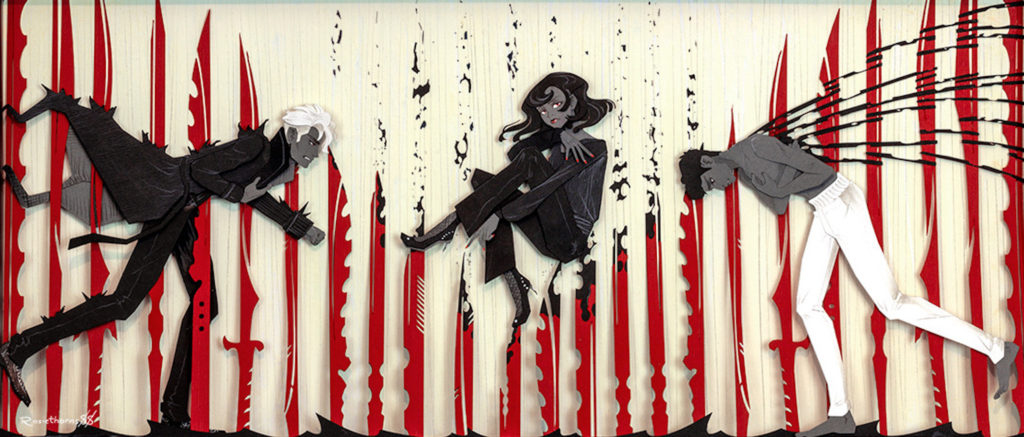
“‘My last thought?’ June said at last. ‘That I would survive. And no one would ever be able to hurt me again.'”
V. E. Schwab
Because we get so few emotive scenes with June, a large portion of what drives her is educated guesswork done on behalf of the reader. Due to the sexually violent nature of her death, and the role she assumes as a hitman upon survival, it can be concluded that June is driven by pain and fear more than any other emotion. In rare moments of vulnerability, she reveals glimpses of these feelings.
“‘Was it worth it?’ Syd had asked her that night, when she confessed to giving up her face, her life, herself. And it was, it was, but that didn’t stop June from craving the light of recognition in someone’s eyes. The comfort of being seen, being known (Schwab).“
Like Marcella, her resentment towards men denotes her as a slave by Nietzsche’s standards, and therefore evil.
Sydney Clarke
In stark contrast to June, Sydney is the individual most driven by love in Vengeful. When she does feel emotion, it is almost always negatively reflected back upon herself. She feels an immense amount of fear, shame, and disgust towards her own characteristics and actions. Sydney’s love for those close to her almost always overpowers any of these negative emotions, but only serves to inflict those emotions even more strongly in the long run.
“‘I want to know,’ she said, voice catching. ‘I need to know.’
‘Why?’
‘Because it’s my fault, I did this to you.’ … Sydney’s face was white. ‘I did this,’ she said under her breath, fingers gripping her knees. ‘I did this to you.’
Victor went to Sydney’s chair and knelt before it. ‘Sydney, I am alive because of you,’ he said firmly. Tears spilled down Syd’s cheeks. Victor reached out and touched her shoulder. ‘You saved me.’
She met his eyes then, ice blue and laced with red. ‘But I broke you’ (Schwab).”
Unlike Marcella or June, Sydney would be considered a slave by nature (she is feminine and therefore the opposite of masculine which denotes master), but not necessarily “evil” because she resents herself rather than men.
This leads one to ask: can there be a slave who isn’t evil in Master-slave Morality theory? A purist reading would dictate that no, there cannot. Nietzsche is very clear when he defines the characteristics of master and slave. However, a feminist perspective on the theory would say otherwise.
Master-Slave Morality Theory Versus Feminism
Nietzsche’s Master-slave Morality theory revolves around the classic “good/right” and “evil/bad” archetypes. He argues that there are two fundamental types of morality: master, which values power, and slave, which values empathy.
According to Nietzsche, those who poses master morality view things in terms of good and bad, while those of slave morality view things in terms of good and evil. This stems from the belief that all those of slave morality derive their morals from some type of religion, therefore creating — according to Nietzsche — a more dramatic rendering of morality. Nietzsche gives quite harsh criticism of those of slave morality, saying,
“…when the oppressed, down-trodden, and overpowered say to themselves with the vindictive guile of weakness, ‘Let us be otherwise than the evil, namely, good! and good is every one [sic] who does not oppress, who hurts no one, who does not attack, who does not pay back, who hands over revenge to God, who holds himself, as we do, in hiding; who goes out of the way of evil, and demands, in short, little from life; like ourselves the patient, the meek, the just,’–yet all this, in its cold and unprejudiced interpretation, means nothing more than ‘once for all, the weak are weak; it is good to do nothing for which we are not strong enough’ (Nietzsche).”
Nietzsche is saying that those of slave morality believe in the concept of “good” as only belonging to those who do not hurt others, which — to Nietzsche — is the same as saying those “good” people are weak and without power. He also argues that the very nature of the “slaves in morals” is fixated on resentment, “…a resentment experienced by creatures who, deprived as they are of the proper outlet of action, are forced to find their compensation in an imaginary revenge.”
If one follows Nietzsche’s definition, it can be concluded that femininity in common troupes of literature is a product of slave morality. Women — even powerful ones — are often presented alongside a storyline where their entire purpose is to be resentful of a man, which drives the plot forwards.
Looking at character pairings like Scarlett O’Hara and Rhett Butler, Elizabeth Bennet and Mr. Darcy, or Jane Eyre and Mr. Rochester, it is clear that the characters are driven by many emotions, but at some point in each novel, they become resentful of their romantic interest. This, in turn, drives the plot forward. If some of the most typical feminine stereotypes are taken into consideration — delicate, dramatic, petty, resentful — they all fall in line with Nietzsche’s definition of a slave by morals. However, feminist theory would argue that their resentment drives them to action, which is the exact opposite of the definition of Nietzsche’s slave.
Resentment is a key feature of perceived feminist culture. Sara Ahmed pulls from the work of political theorist Wendy Brown to describe how resentment is so intrinsically tied to feminism. “Furthermore, it is not just that pain compels us to move into feminism — or compels feminism as a movement of social and political transformation. The response to pain, as a call for action, also requires anger and the interpretation that this pain is wrong, that it is an outrage, and that something must be done about it.
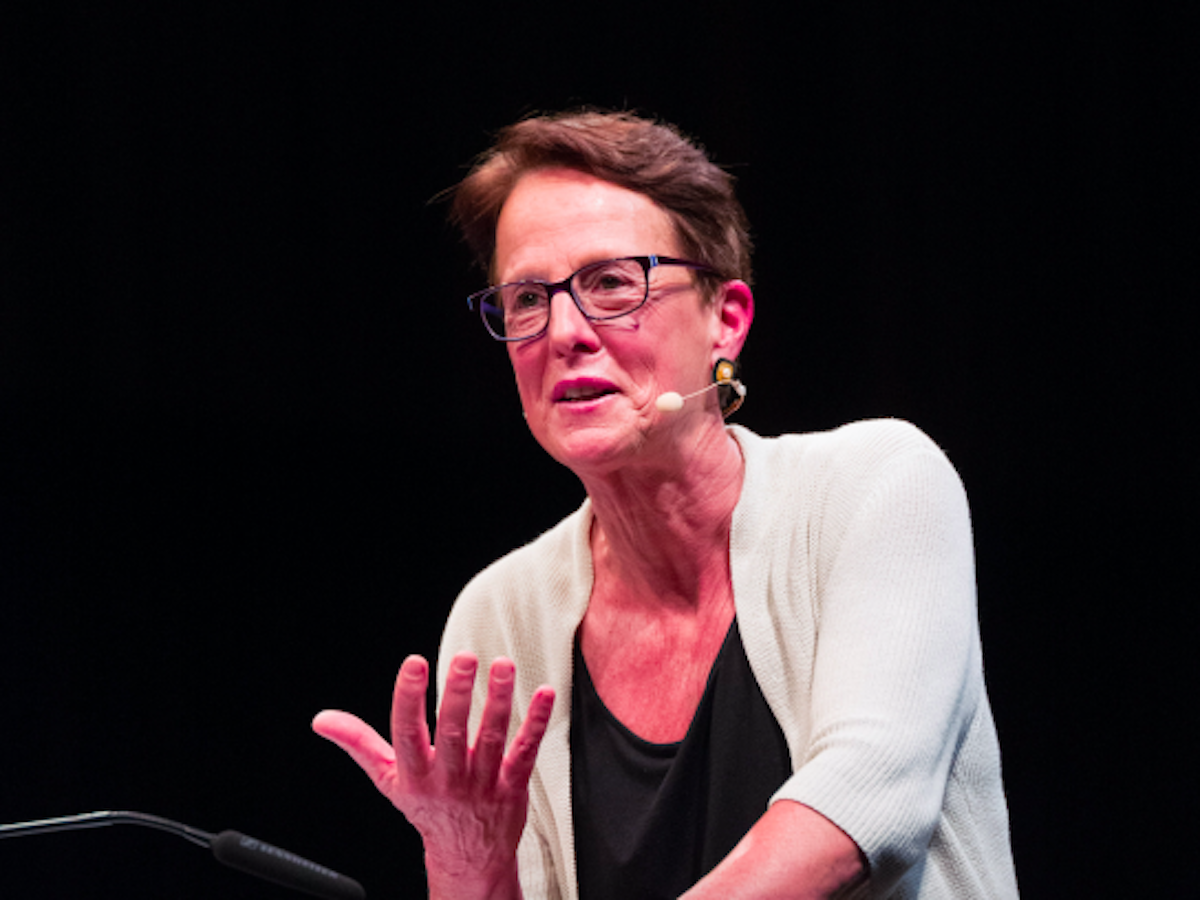
It is precisely the intimacy of pain and anger within feminism that Wendy Brown critiques as a form of resentment, as a form of politics that can only ‘react’ rather than ‘act’ (Brown 1995:73) (Ahmed 174).” Because the feminine must appear resentful to achieve action within the feminist movement, women with agency are pegged as caricatures of resentment.
Returning to the superhero trope, female superheroes are fueled by — and given a purpose through — a villain who has wronged them. As seen in my examination of the emotions of the three female characters in Vengeful, resentment — particularly that of a man — is what drives their emotions. Marcella is wronged by her husband, June is violated by men, and Sydney hurts the man she cares for. Resentment is the catalyst for their pain, hate, fear, disgust, shame, and love. It is their emotions that drive their resentment, which drives them to action.
Free Will And The Manufacturing Of Natural
Nietzsche’s thoughts on free will are another aspect of master-slave morality that raises many questions when examining the resentful woman. He argues that people don’t have “free will,” because humans are their will; their actions cannot be separated from who they are. This line of thinking is drawn from the same idea of master-slave morals, where it is by the inaction of the slave by morals that the master by morals exists.
Applying this same thought process to the resentful woman would mean that the woman (slave) is categorized by her inaction and performative resentment, rather than real, emotional, resentment, therefore making man the master not because of some natural order, but because of the emotions they directly elicit.
The women in Vengeful are examples of the “resentful woman,” but their resentfulness towards men drives them to action instead of away from it. These women, who Nietzsche claims have no free will and are simply acting on the very inherent nature of the emotions men elicit from them, are actually proof that, through a feminist reading, Nietzsche’s Master-slave Morality theory leaves much to be desired.
If a more feminist approach were applied to Nietzsche’s master-slave morality theory, the feminine — or women, more specifically — wouldn’t necessarily be considered slaves by default by virtue of their morals. Instead, the idea of performative resentment that Nietzsche bases his theory on is shown to be the delegation of slave morality onto women by men.
In her work, Ahmed suggests that the “doing” of emotions is “bound up with the sticky relation between signs and bodies” and that “emotions work by working through signs and on bodies to materialize the surfaces and boundaries that are living as worlds” (Ahmed 191). This concept of emotion would explain how Nietzsche’s master by morals pins the label of “resentful” onto the slave by morals while simultaneously stating that they couldn’t possibly be the ones to put a label onto anyone, as each person is simply as they are — not a product of their actions, but their inaction.
If that seems confusing and contradictory, that’s because it is. In the simplest terms, Nietzsche claims that “master” and “slave” are natural roles. However, when he explains those roles in further detail, they are described as involving actions and reactions that are not natural but rather manufactured by the suppressor (master) onto the suppressed (slave). These actions and reactions are then used to “prove” the natural order, which in reality they are the catalyst themselves; the actions of the suppressor create the reactions of the suppressed, justifying the actions of the suppressor (in their own eyes). This explanation allows them to remain masters without blame.
The Morality Of Resentment
Ahmed’s exploration of the emotions of feminism asks many simple questions of the reader. With each new chapter, she asks readers to think about what it means to feel a certain emotion, and why those feelings differ in various contexts; she asks the reader to apply the emotion to possible body language. Emotions are incredibly subjective, so when assessing the emotions of a character within a novel the reader needs to take clues from the author to see if the character is actually feeling that emotion, if they are feigning it, or if it is being assumed by a different character.
In Vengeful, Marcella is depicted as resentful by the men around her, but the reader can recognize that she feels true resentment — that it is not just being projected onto her — from being privy to her dying thoughts.
“That fucking prick. As if any of it had been his idea, his doing. ‘You’re nothing without me,’ she said, her words unsteady. ‘I made you, Marcus.’ She heaved against the candelabra. It didn’t move. ‘I will unmake you.’
V. E. Schwab
‘People say a lot of things before they die, sweetheart. I’ve heard them all.’
Heat filled the room, her lungs, her head. Marcella coughed, but couldn’t catch her breath. ‘I will ruin you.’
There was no answer.
‘Do you hear me, Marcus?’
Nothing, only silence.
‘I will ruin you!’
She screamed the words until her throat burned, until the smoke stole her vision, and her voice, and even then it echoed in her head, her last thoughts following her down, down, down into the dark.
I will ruin you.
I will ruin.
I will.
I –“
Her power upon survival is a sign of her true resentful nature as well; she ruins what stands in her way, literally. It is important to acknowledge that even though Nietzsche’s Master-slave Morality Theory is ripe for critique, it doesn’t necessarily categorize resentfulness as a negative.
While the theory as a whole is outdated, problematic, and — in some aspects — disproven by modern science, if the context is stripped away and only the definitions of terms remain, Nietzsche proposes that resentfulness is simply a qualifier for the title of slave and not necessarily a negative characteristic.
This seems to line up with a recent biography of him written by author Sue Prideaux which attempts to shed light on the idea that his theories have been misunderstood, misconstrued, and misattributed to further the alt-right agendas with which he is commonly associated within modern society.
If Nietzsche’s theory — as read through a feminist lens where there is a performative aspect of resentment — can no longer place the resentful, actionable woman into the category of the slave by morals, does it automatically assign the feminine to “master”? Arguably, no. The feminine, as society stood in the time of Nietzsche and as it stands now, is inferior to the masculine in terms of morality because of their nature of resentment and implied inaction, but even when the feminine takes action, it is still seen as action caused by the resentment of the master by morals, and therefore is sill — by Nietzsche’s definition — slave by morals.
The master created the very grammar that assigns the label to the slave but can deny that on the idea that humans are simple as they are according to the nature of the will and soul, there will never be an opportunity for the feminine to experience an emotion that the masculine hasn’t already determined to be a reaction to their own existence.
Nietzsche’s Theory Is Incompatible With Feminism And Reality
Lacking a feminist component, Nietzsche’s master-slave morality theory cannot be used to accurately analyze female characters in a 21st-century novel. While the matter of time difference is, in part, at fault — Nietzsche first discussed the theory in 1887 — there are also inherently anti-feminist aspects embedded into the theory that lingers in society even today. The performativity of resentment as applied to women by men lacks nuance; it ignores the entire idea that the attributes of the slave are attributed to them by the master.
Although Nietzsche’s Master-slave Morality theory does provide an interesting lens through which to view good versus evil, its concepts of revenge and free will make a feminist reading impossible, because when applied to a woman, the theory that should denote them a slave by morals, actually makes them a master by morals. With the increasing importance of feminist culture in academia, theories like Nietzsche’s are going to need to be picked apart and re-wired to evoke a more wholesome reading of modern literature, lest they become completely incompatible with reality.
